This week, Rosina and I spent two days in Hamilton researching for our upcoming project at Hamilton Artist’s Inc. Two Tales of a City will uncover, celebrate, and imagine a future for lost histories of Steel City.
We started off on Wednesday by visiting the brand new Hamilton Artist’s Inc building on the corner of James and Cannon Streets. The inside was gorgeous and still smelled of new construction. We’ll be tackling that large, blank grey wall on the side of the building. It was nice to be able to see the building in the flesh, as we had been working from architectural mockups while brainstorming the project back in Windsor.
Following awesome recommendations for research sites from the project’s curator Julie René de Cotret, we headed over to the Downtown Hamilton Public Library, which has a farmer’s market attached on the main floor as well as access through to an indoor mall. Rosina mentioned the unlikeliness of a library being in a mall, and I couldn’t help but recall when the Art Gallery of Windsor was temporarily located in the Devonshire Mall. There’s something refreshing about a touch of culture in such a commercial space.
Our interest lies in both the complexities of francophone existence in Hamilton and the remnants of a lesser-known textile industry with significant ties to the Steel City. We’re discovering how francophone identity is becoming increasingly woven into the city through the creation of community. We’re looking for new takes on old traditions. How do communities and industries preserve themselves all the while shifting and growing and changing? How do culture and industry in Hamilton shape the identities of its residents?
We divided forces and dug up news clippings, scrapbooks, microfilm, and other documents relating to both francophonie and textiles in Hamilton.
A good portion of the rainy afternoon was spent filling out slips for the archivists, reading, photocopying and taking notes; a very important first step to understanding francophonie in Hamilton.
Rosina found a very informative document on the history of the sewing machine. Bet you didn’t know it was invented and first manufactured in Hamilton, by francophones. Hamilton also used to have two knitting mills that have recently reemerged in the news. Hamilton also has a thriving textile district with long withstanding mom and pop shops and a BIA that takes image and identity very seriously.
Most of the information I found on Francophonie in Hamilton dealt with political struggles, a fear and ignorance of separatists, and tales of economically threatened francophone education and services through the 1960’s to the mid 1990’s.
We found a few good articles about francophone traditions of quilting, weaving and sewing. One in particular was about a group of francophone women who started a sewing club in Burlington about 20 years ago called Héritage Féminin. Super Cool!
The microfilm machine was pretty neat. We didn’t find anything on the microfilm but had buckets of fun checking it out.
Ryan Paquette’s name came up quite often. He seems to be a vocal advocate for francophones in the Hamilton region. He (or his son of the same name) is still in practice. We will definitely be using him as a resource.
We left the library to check out the textile district on Ottawa Street. We were fortunate to be able to use HAI’s Program Director Irene Loughlin’s car, we would have been soaked otherwise!
Salt-N-Pepa was (obviously) very necessary.
We drove through the textile district and managed to snap a few shots in the rain, but most of the stores were closed as it was after 6 pm. Giant spools of thread and bright coloured signposts adorned the sidewalks along Ottawa Street, proof of an active BIA.
We decided we’d have to come back here the following day and stop into the BIA office and some of the stores.
Not much action down here after business hours on a rainy evening, but the next day proved to be quite bustling. We ended Day 1 with a delicious mexican dinner, talking about our day and thinking through our plans for the following day.
Day 2 began with some tea and nice message from Irene, who graciously offered to let us stay with her. We headed out in the car early. No rain today!
After (accidentally) checking out the first Tim Horton’s ever on Ottawa street, we went into the BIA to ask for information on the textile district. We were directed to one store in particular; The Textile Centre. We were told it was the oldest one in the area and had been owned by the same family for generations.
Fabricland has found its place amongst the locally-owned fabric shops on Ottawa street.
This was a store called European Textiles, which mostly had upper-end upholstery. Not what we’re looking for. They were also not fans of us taking photos.
Some cheap fabric that could be used for our work. We will be constructing a giant quilted banner with changeable messages in french, as well as bunting that will carry aspects of collage. We’ve decided to source at least a portion of the material required for the build in this textile district on Ottawa street. The rest will be thrifted or collected as donations from city residents.
We spend a bit of time looking into types of materials and price ranges.
There were quite a few good deals at Textile Centre, and the owners there told us a bit about the knitting mills that used to be operational in Hamilton. There were also interested in our project and were opening to helping in any way they could.
This might be the type of material we use for the black lettering on the quilt.
Some good finds in the basement of Textile Centre.
We inquired about reflective material, which was another idea we had for the lettering on the banner. This tape seems to be the best option, and finding a bulk source online might be the way to go if we decided to go that route.
We left the Textile District to meet up with Julie back at HAI.
Julie arranged for us to check out the very active Centre Francais de Hamilton. This centre had come up in our research at the archives, and we were eager to find out more about the present and the future of francophonie in Hamilton, having learnt about it’s past the day before.
We met with Ariane Tilstra, whose official job position is Coordonnatrice des services aux nouveaux arrivants volet jeunesse et sensibilisation/antiracisme. We had prepared a list of questions for Ariane. Rosina, not understanding much at all, helped record the all-french interview.
Speaking with Ariane, we learned of an important shift in francophone identity in Hamilton as of the past 15 years. The Centre Francais, which opened its doors in the 1970’s was established to serve the francophone community of the time, which was pretty much entirely migrated québécois or white franco-ontariens with european ancestors. Today, this type of french person or ‘habitant‘ is only about 50% of the francophone population of Hamilton today, the other half being french-speaking newcomers of various ethnicities from all over the world.
While talking to Ariane, we began to realize that much of the same struggles and social issues that francophones were having as minorities from the 60’s through to the 90’s still exist today, although the definition and reality of what a francophone is has shifted greatly.
This idea was reinforced at our next stop, the Paroisse Notre-Dame du Perpétuel Secours, the city’s only francophone church. Rosina and I weren’t able to speak to the priest, so we waited outside for Julie as she spoke to someone inside.
We learned that the priest of the congregation, who we totally assumed to be an old, white ‘habitant‘ type, is a recent newcomer from Haiti. We got a few good email contacts and will be talking to the priest in the near future.
The trip ended with a yummy Italian dinner with Julie and Irene before catching the train back to Windsor. We’ll be spending the weekend processing our research, brainstorming some textual messages and coming up with a plan of action to get some community input infused into the project. Look out for more updates soon!

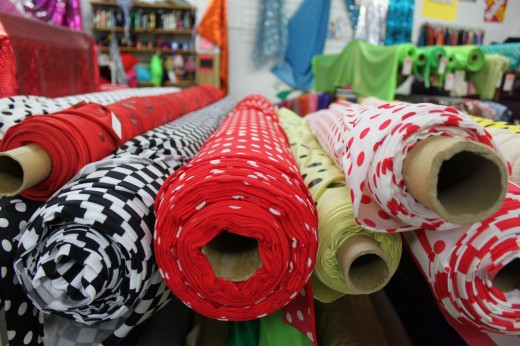
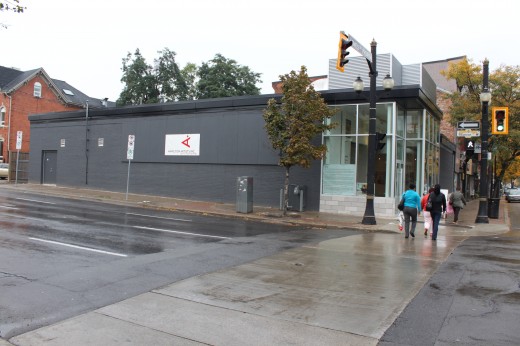
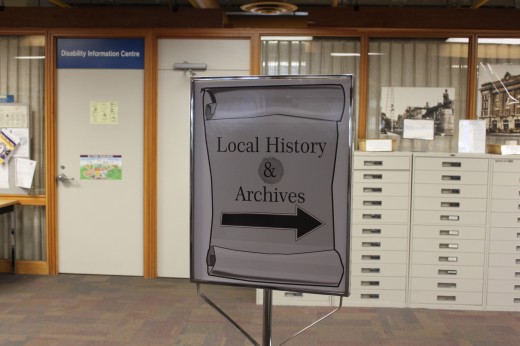
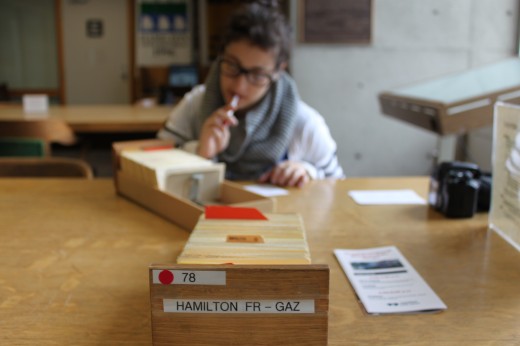
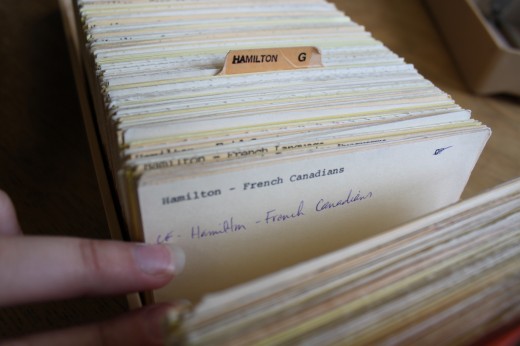
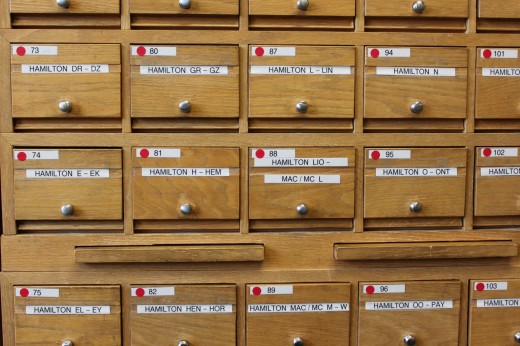
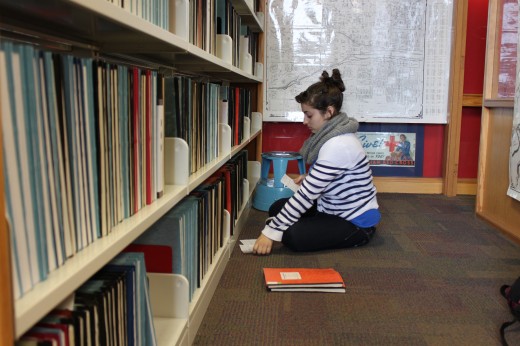
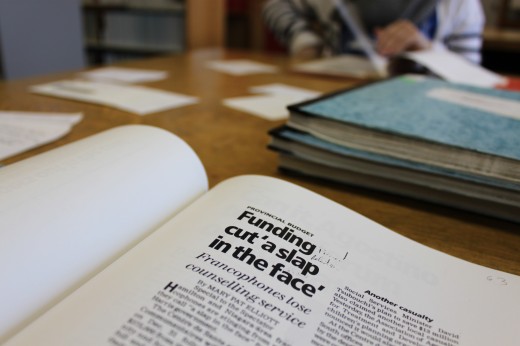
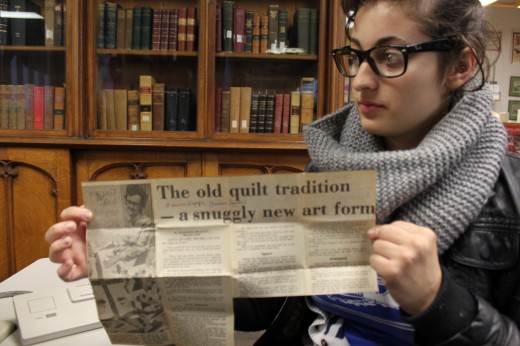
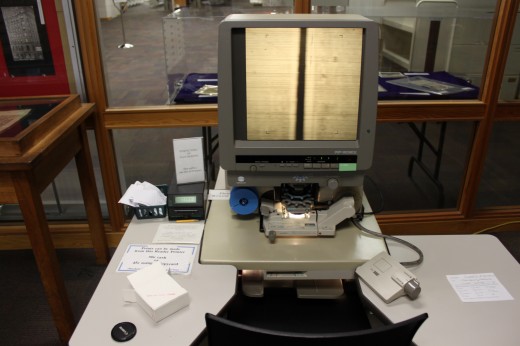
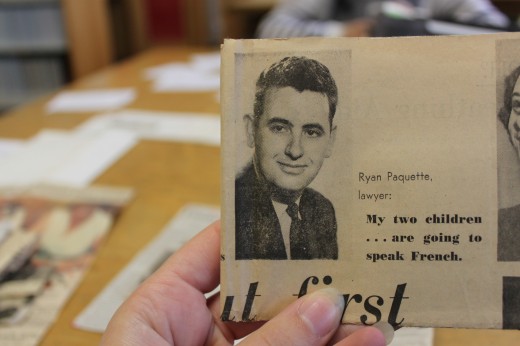
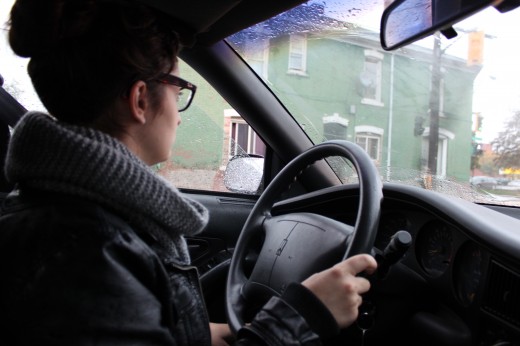
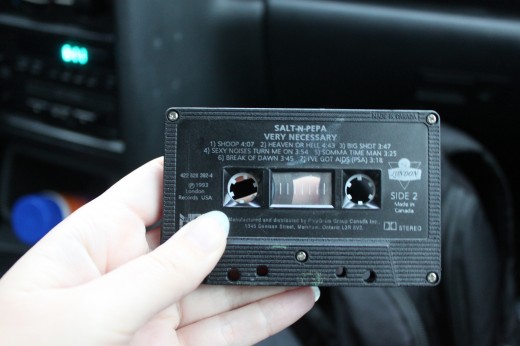
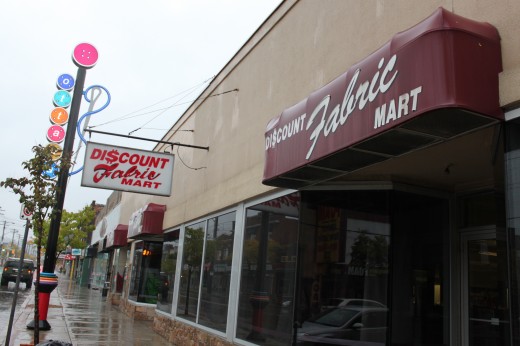
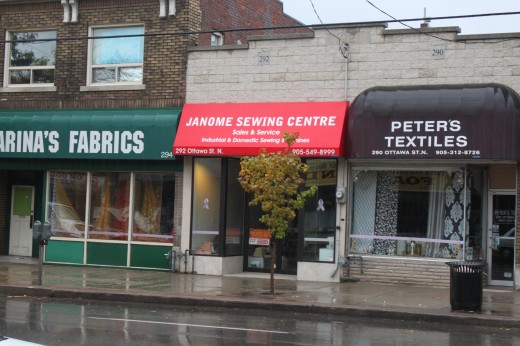
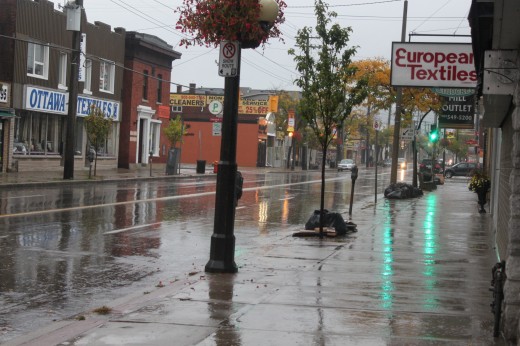
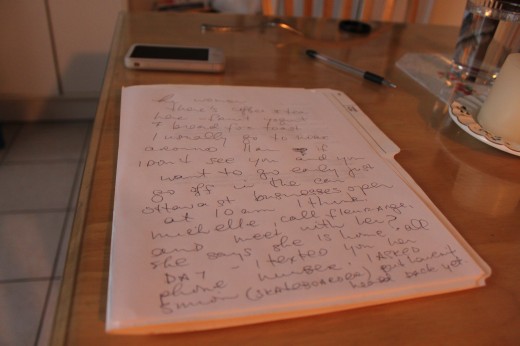
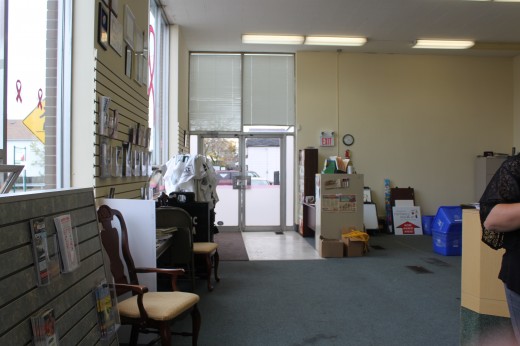
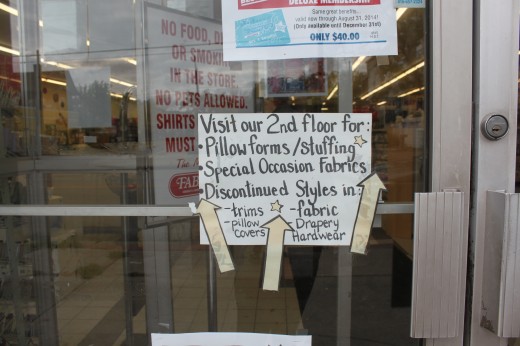
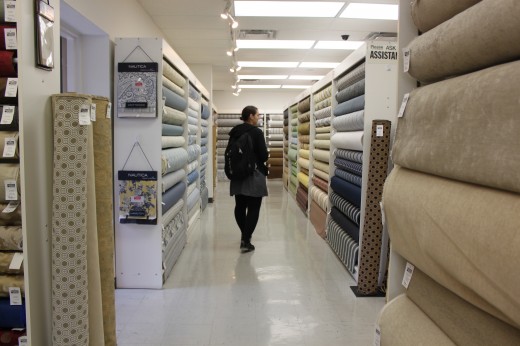
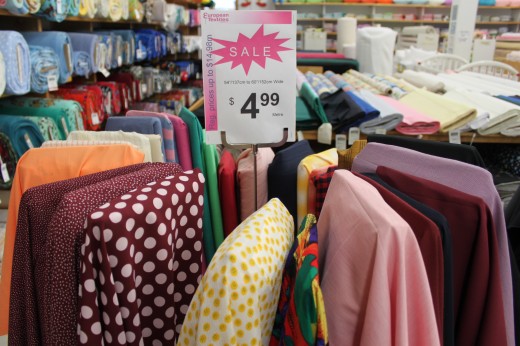
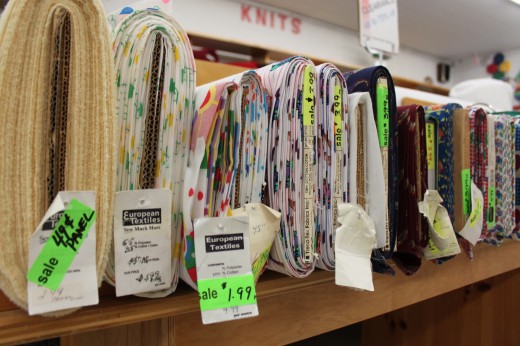
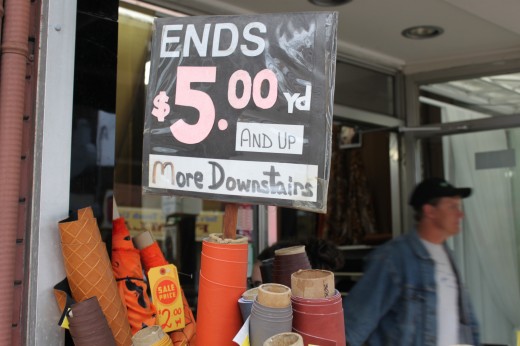
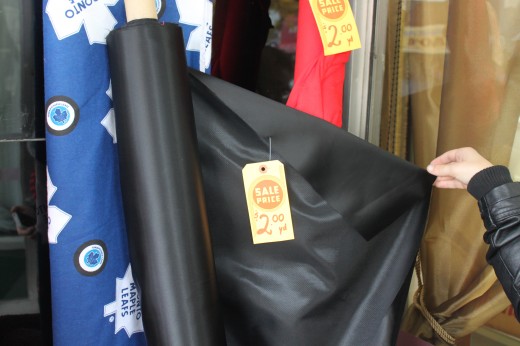
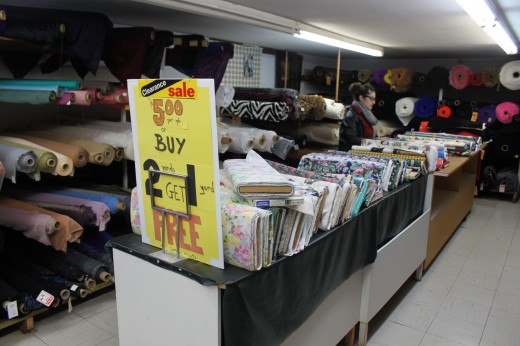
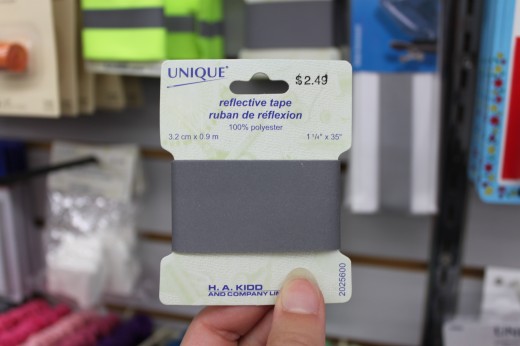
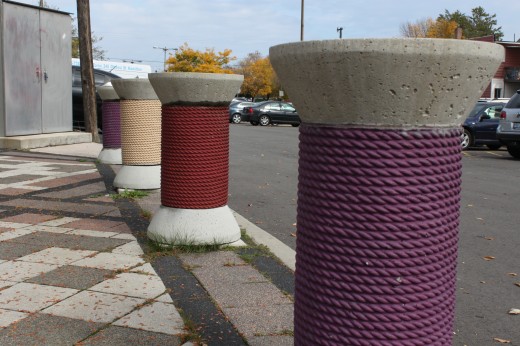
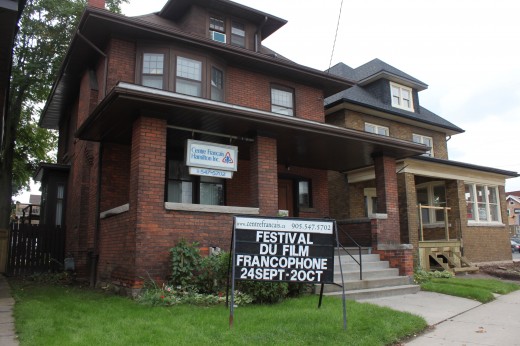
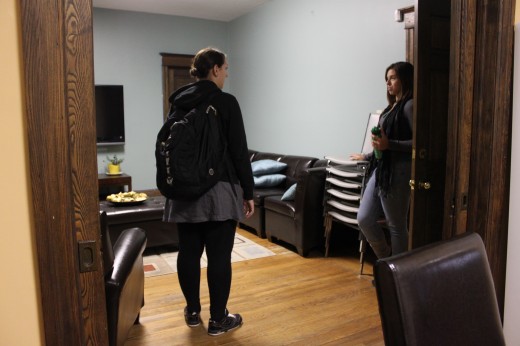
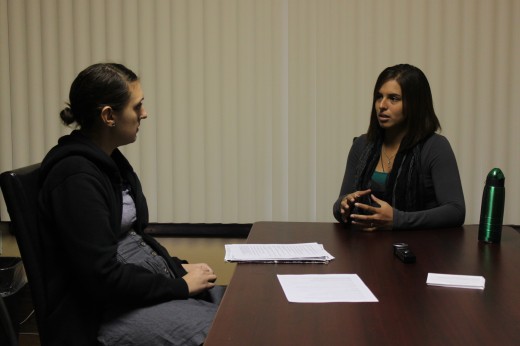
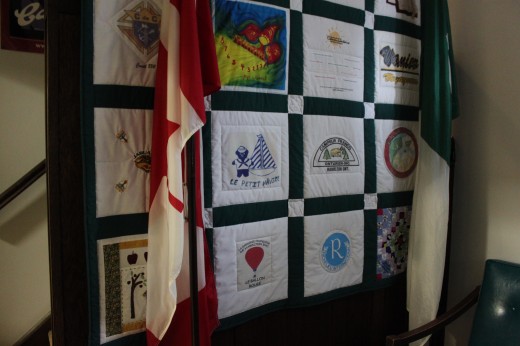
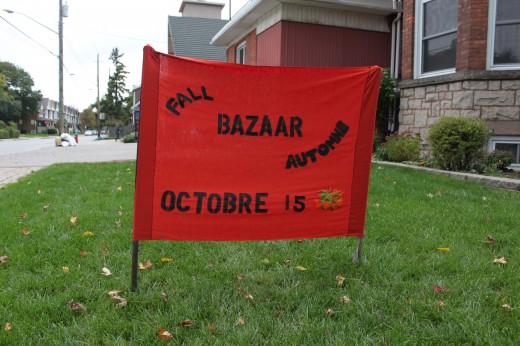
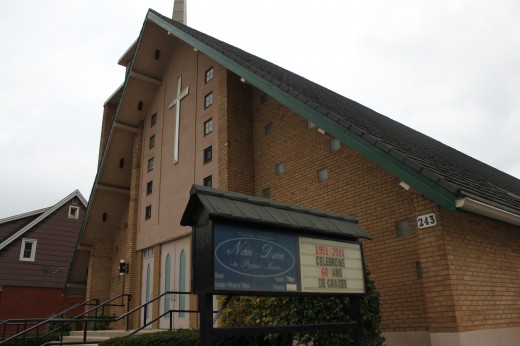
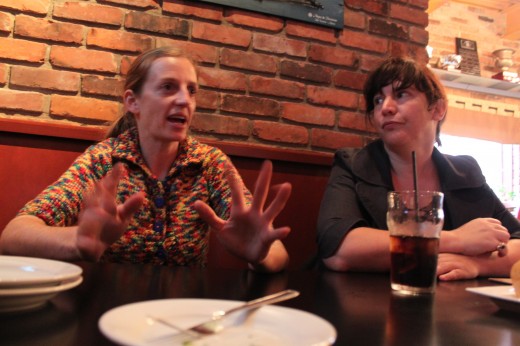
Incredible start to the research, way to go Michelle & Rosina!
I’m curious about the use of Francophonie — is it incorrect to use Francophone in the way that I’ve used it before? Or does it mean something different (grammatically?)
Also, the sign — are we still considering French and English variety of texts? It might be interesting to try to note some of the shifts in the local French language as the ‘habitants’ mix with newcomers who also speak French (if there are any?)
When are you guys heading up again? Can’t wait to hear more!
Justin – the word francophonie is a noun. Although no such word exists, its english equivalent would be “Francophonism”.
Francophone could be a noun when used in reference to a person (ie. a francophone) and it could also be an adjective (ie. a francophone school)
We are thinking less along the lines of french and english translations. We’re definitely on the same page about including the shifts in the local french language, old vs new.
Not sure when we’re heading back up, but it will be to purchase material!!!
Thanks for the clarification, I hadn’t realized francophonie was a french word, that makes sense.
About the french and english texts, it’d be interesting to hear more about the reasons you’re thinking of stepping away? ‘Two tales of a city’ certainly doesn’t necessitate two languages per se, but maybe there’s something worth exploring about the stories and locality of a place that might change drastically from one language (and cultural identity) to another. It would seem that the political struggles you talked about were struggles because of pressures from the anglophone community and perhaps there’s something to be revealed about the distance between those two sides. As well, I think the ideas around new forms of old industries, and how these industries have responded (or haven’t) to the community is something worth exploring and spanning across the two languages. Maybe?
Hi Michelle,
First of all, thanks so much for the interview!! I’m really excited for this project and even more excited for the Centre français to be part of it!!
I did some research with one of my co workers because I still felt like what I gave you for a translation of quilt was not quite it. After about a half hour, we found it. the proper translation of a quilt is “une couverture piquée”! An other one that’s not quite it but closer than “édredon” would be “courtepointe”. At this point, it really just depends on where people are from and which rings best in their ears.
I just wanted to pass on the info and let you know we looked it up…it was gonna bugg me forever otherwise!
I look forward to seeing you guys and all your work again! I loved reading the blog. I’ll make sure we have a link to it on our website!
Great job in Hamilton. Textiles and French people in Hamilton. Who would of guessed? Nice to learn something new.
As far as I know, a quilt was called un couvre-pied in Detroit River language. My two cents.
HI Ariane,
Merci beaucoup pour la jolie commentaire. Nous sommes hâte de continuer ce projet et nous serons en contacte bientôt!
Bonjour Michelle,
C’est une gageure de vouloir sortir de l’ombre les histoires oubliées de Hamilton. Je suis journaliste pour Le Régional, un journal francophone, j’aimerais bien écrire un sujet sur votre trip dans les archives de la francophonie. Pourrait-on se parler. Mon numéro 905 735 9666 ou 905 785 3229. Jorge Oliveira
Thanks Michelle and Rosina,
I love this!!! So excited to see the project further unfold and to learn more about the city and the Francophone community in Hamilton from your research and art. I will link to your site so our members can see your work.
Best wishes and thanks,
Irene